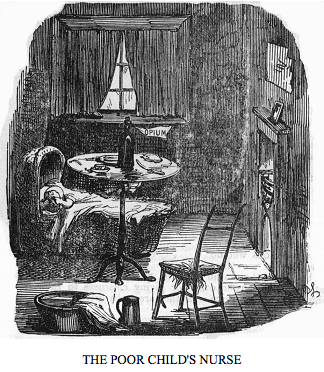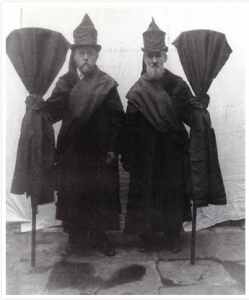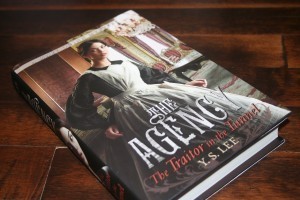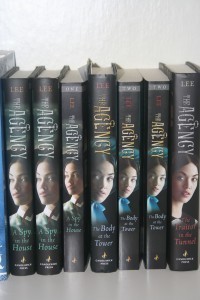Y.S. Lee's Blog, page 26
March 2, 2012
Victorian Obsession: Opium
Oooh, opium. So dangerous. So addictive. So… legal?
Welcome to the last day of the Traitor in the Tunnel blog tour! Today, I'm talking about the Victorian Obsession with Opium, below. It's a thrilling and multi-faceted story, and I hope you'll agree.
Victorian Obsession: Opium
What do you think of when I say, "opium"? Poppies, addiction, maybe the British Empire or hookahs? Well, what about babies? Let me explain.
Opium was, of course, one of the great money-spinners of the British Empire. The British grew opium in British East India and sold it in China, where there was huge demand for it. That's why the stereotype of the opium-addict is often that of a gaunt Chinese man lying beside a hookah. But, as with all stereotypes, that's only part of the picture.
Opium use was totally unregulated in England until the Pharmacy Act of 1868. This means that the first half of the nineteenth-century was basically a free-for-all in terms of drug use: anyone could sell it, and anyone could buy it. And as in China, opium merchants in England did a roaring trade.
One of opium's most popular uses was in an alcohol tincture called laudanum, popularly used to calm the nerves, help sleep, and generally soothe the user. It was considered totally respectable, so ladies as well as gentlemen felt free to take it – and that's what the British did, in vast quantities. And since opium was so effective and pleasant for adults, they also gave it to children.
Some of the widely marketed "soothing syrups" for infants in the early nineteenth century were mixtures like Godfrey's Cordial, which was made of opium, water, treacle (a sweetener), and spices. Other brands included Steedman's Powder and Atkinson's Royal Infants Preservative. These were immensely popular for use with ill babies. It makes sense: when children are ill, parents want them to feel better. Opium lessened the pain, and the sweetness of the syrups made sure the babies accepted them.
Obviously, opium syrups were not good for babies. Even ignoring questions of addiction and brain development, babies given frequent doses of these syrups tended to be small and stunted, and were often described as "wizened", or looking like little old men. The reason? They were too sleepy to eat, and became malnourished as a result.
It's impossible to know how many babies died of starvation as a result of opium syrups. But during the mid-nineteenth century, doctors suspected this was the case. Opium syrups were popular not just with parents of sick infants, but also unscrupulous nurses (who wanted children in their care to sleep a lot) and working-class parents (who were too exhausted from long working hours to deal with fussy babies). These are the most difficult deaths to trace, although it didn't stop people from speculating.
And this is the double standard of Victorian opium use: you could sit in your elegant drawing-room and denounce the sinful ways of Chinese opium addicts, lazy nurses, and the working poor, all while sipping a glass of sherry-and-laudanum to help you get a good night's sleep. It's a bitter irony. Rather like the taste of laudanum itself.
For more neo-Victorian fun, I hope you'll join me tomorrow, at my real-life launch party for The Traitor in the Tunnel. The details:
Saturday, March 3, 2012
from 3 to 5 pm
Novel Idea Books, 156 Princess St., Kingston
I hope to see you there!
March 1, 2012
Victorian Obsession: Technology
Hello, friends. I'm typing this post on my four-year-old MacBook, my five-year-old cellphone by my side, and Florence & the Machine anthemizing (I know that's not a word, but it's so apropos) on my can't-remember-how-old-it-is CD player. Who, me? Behind the times?
Much of the time, though, I think I live in the nineteenth century – and even compared to the Victorians, I'm a bit of a Luddite. For today's stop on the Traitor in the Tunnel blog tour, I'm at the Booksmugglers, talking about the Victorian Obsession with Technology. Yes, our techlove pales in comparison to theirs. Click on over and see for yourself!
February 29, 2012
Victorian Obsession: Death
Hey hey, let's hear it for Death! (Or, at least, the Victorian Obsession with it.)
Today, the Traitor in the Tunnel blog tour stops at The Story Siren, where I talk about Victorian funeral rites in all their elaborate glory. Go on – you know you're curious about that photo, at least.
Also, southeastern Ontarians, you are warmly invited to my book launch party this weekend! The details:
Saturday, March 3, 2012
from 3 to 5 pm
Novel Idea Books, 156 Princess St., Kingston
I hope to see you there!
February 28, 2012
Victorian Obsession: Purity
Hello friends, and welcome to the second day of the Traitor in the Tunnel blog tour! Today, I'm talking about Purity. Because it's such a vast topic, I'm focusing on two particular types: Purity of Food, over at Steph Su Reads, and Purity of Women, hosted by the Bookmonsters. (On a side note, isn't it amazing how quickly "purity" ceases to look like a real word?) I hope you'll click over and read all about this Victorian Obsession.
These bloggers have also reviewed Traitor, if you're curious: Melissa at I Swim for Oceans calls it a "maze of a mystery that will keep you on your toes", and Kristen at the Bookmonsters says it's "a must-read". Thank you so much, bloggistas!
Finally, The Traitor in the Tunnel officially goes on sale today! I ran into my local indie bookseller yesterday, and he told me the copies had JUST arrived. I may just have to prowl downtown today, purely to admire them on the shelves. If you happen to see Traitor in your travels, please give it a fond pat from me!
February 27, 2012
Victorian Obsessions: Phrenology
Welcome to the first day of the Traitor in the Tunnel blog tour! Did you know that the bumps on your head reveal your personality? At least, some Victorians thought so.
Read about the Victorian Obsession of Phrenology, my favourite pseudo-science, at I Swim for Oceans.
February 22, 2012
What made you a reader?
Hello, friends. This week, a local journalist, Hollie Pratt Campbell, interviewed me. In the course of our conversation, Hollie said that while she now reads mostly adult books, it was Young Adult fiction that made her a reader; that really stirred her love of books, as a younger reader.
I was thinking about why that's the case, and I suspect it's to do with the importance of story in young people's lit. Young readers don't read primarily for gorgeous prose, elaborate narrative structure, or postmodern wit. (Which is not to say that they don't appreciate all those things; they can be sophisticated readers.) But before all else, they want a fully developed story with complex characters and a conflict that gets resolved.
There's a purity to writing for kids that's incredibly satisfying, precisely because of these elements. As an adult, I too enjoy the quest. I want to solve the problem; I long to overcome the challenge. When life is messy and ambiguous, it's a relief to pull things together neatly in a plot.
The plot, however, is just the hook. What remains for me are the characters and their specific struggles. If I think about the books that made me a reader, I think of the Murry family, in Madeleine L'Engle's Time Quartet – loving, often separated, intrepid. Emily Starr, the idealistic, lonely, aspiring writer created by L. M Montgomery. Even the Naughtiest Girl, a spoiled brat who's determined to be expelled from her boarding school, yet comes to belong there (it's a series by Enid Blyton).
What do you read for – plot, characters, something else? And what are the books that made you a reader?
The dog ate my homework…
…or, Is it Wednesday Already?
I'm sorry for the blogging fail! This past weekend was a long one (holiday Monday), and while I knew today was Wednesday, I also kind of thought it was Tuesday. How's that for a poor excuse?
I'll make some time to blog this afternoon, and it'll be up by tomorrow morning at the very latest!
February 15, 2012
We are all Jane Austen
Hello, friends! This week, I saw an interesting conversation develop about Jane Austen, race, and feminism. It started at Reading in Color, when Ari asked, "Is Jane Austen only for white people?" Sayantani at Stories are Good Medicine picked up the conversation and posed the logical follow-up question: "Can feminists dig Darcy?" There were loads of interesting observations in the comments at Reading in Color, and my intention here isn't to rehearse those dialogues or respond to each one. But I was struck by the questions and want to talk a bit about how they sound to me.
To my ear, at least, each question can be flipped around and made more general:
Should everything I read as a woman of colour include characters of colour?
Should everything I read as a feminist be overtly progressive?
In sum, should we create a world of books that reflects our own world views and positions?
It's certainly important to see ourselves – our own kind of people, whether we're talking race or creed – reflected in our literature. It creates a sense of community, assists us in defining ourselves more clearly, helps us to look critically at our own strengths and shortcomings.
But at the same time, what a wilfully small world that would be. Can you imagine how limited our interests, imaginations, interests, and conversations would be, if that were the case? How unable we'd be to imagine another point of view, or follow an argument that didn't relate directly to our own interests? How would we learn new things? How could we admire – and borrow – streaks of brilliance that we didn't create?
We must read widely, read deeply, and read well outside our comfort zones if we're to learn and grow. And if we enjoy what we read – if we absolutely adore what we discover – so much the better.
I'd also argue that when we make assumptions about the homogeneity or reactionary nature of Jane Austen's (or anyone else's) world, we're limiting ourselves as much as we are them. People assume all the time that Victorian London was lily-white, with a clear-cut and never-changing social order. The reality is much more complex, as I try to show in the Agency novels.
Finally, isn't it interesting that we don't have to give our beloved Jane Austen a special get-out-of-jail-free card? Think about the lesson at the heart of her most-adapted novel, Pride and Prejudice. It is, at core, a novel about humility: 1) not presuming yourself superior to another group of people (in Darcy's case, the Bennet family), and 2) being able to retract your hasty judgement of someone based on hearsay (in Elizabeth's case, Darcy). That's a fine message for any progressive book to carry – whoever the author.
Are you an Austenite? What have you learned from Jane Austen – or another favourite author?
Other bits from this past week:
On the same day I received my finished copies of Traitor, I heard on Twitter that They Are About – as in, already on sale in some places! One reader in Texas and another in Kentucky have already read the real deal. This is so exciting.
This review from Forever YA is the funniest review I've ever read about one of my own books.
And here's a terrific podcast about the Plimsoll line, which has a small but important role in the plot of A Spy in the House. Thank you, MrsFridayNext, for sharing it with me!
February 8, 2012
A very modern Victorian
Hello friends! This week, I'm writing a series of short essays for my Traitor in the Tunnel blog tour, which starts at the end of this month. The tour will feature some of my favourite YA bloggers, including the Story Siren, I Swim for Oceans, the Booksmugglers, Reading in Color, Steph Su Reads, and the Bookmonsters. Hurray!
My theme for this blog tour is Victorian Obsessions and some of my research for it led me to a series of poems I haven't thought about since I was a PhD student: Modern Love, by George Meredith. Modern Love is actually a sonnet sequence – a chain of fifty connected poems, each with the same rhyme scheme and all on the same subject.
That's already ambitious. Yet Meredith goes further. Most sonnet sequences are about love – the development of a romance, the triumph of true love, pure and passionate. But Meredith turns this around completely, because Modern Love is about the breakdown of a marriage; his own marriage. Here's the first 16-line sonnet, "By this he knew she wept with waking eyes":
By this he knew she wept with waking eyes:
That, at his hand's light quiver by her head,
The strange low sobs that shook their common bed
Were called into her with a sharp surprise,
And strangled mute, like little gasping snakes,
Dreadfully venomous to him. She lay
Stone-still, and the long darkness flowed away
With muffled pulses. Then, as midnight makes
Her giant heart of Memory and Tears
Drink the pale drug of silence, and so beat
Sleep's heavy measure, they from head to feet
Were moveless, looking through their dead black years,
By vain regret scrawled over the blank wall.
Like sculptured effigies they might be seen
Upon their marriage-tomb, the sword between;
Each wishing for the sword that severs all.
This sonnet blows me away every time I read it. It's ruthless and violent, fiercely radical and brutally effective. I'd never guess that it was written in 1862; to me, it sounds more like 1962. And it's a great reminder – especially to me, since I'm now writing about "the Victorians" and invariably generalizing a bit – that every era has its startling exceptions.
What do you think of the poem? Are there other exceptions (Victorian or otherwise) that it calls to mind?
As well as a blog tour, I'll be having a launch party in Kingston to celebrate the publication of Traitor. Hurrah! The details:
Saturday, March 3, 2012, from 3 to 5 pm
Novel Idea Books, 156 Princess St, Kingston
If you're local, I'd love to see you there!
February 1, 2012
This is the month!
Hello, friends. Is it just me, or was this the shortest January ever? I'd still be in denial about its passing, except that I'm so excited for the North American publication of The Traitor in the Tunnel. So it was utterly appropriate that yesterday, as I sat eating lunch, a chipper FedEx guy turned up at my door with this:
I wish this photo did justice to how exquisite this book really is. It could be the colour scheme (my favourite colour is red) but I think this is the most beautiful Candlewick edition yet. And in 27 days, it will be in bookstores everywhere! There'll be a blog tour happening that week, involving some of my favourite YA book bloggers. And I've also begun planning a launch party in Kingston, so if you're local, I hope you'll plan to pop in on Saturday, March 3 for food, festivities, and general frippery.
Finally, here's the bit of the cover that I always have trouble visualizing, even after seeing an electronic version of the cover: what the spine looks like, lined up with the others.
So, what do you think?







